The bridge connecting Vámház Square and Szent Gellért Square had been planned since 1868, but its final construction was not decided until 1891. At that time, there were five places in competition for building a bridge: in Óbuda, at the new Parliament, at Eskü Square, at Vámház Square and at Boráros Square. There were arguments in favour of each, and different groups of the population supported one idea or another.
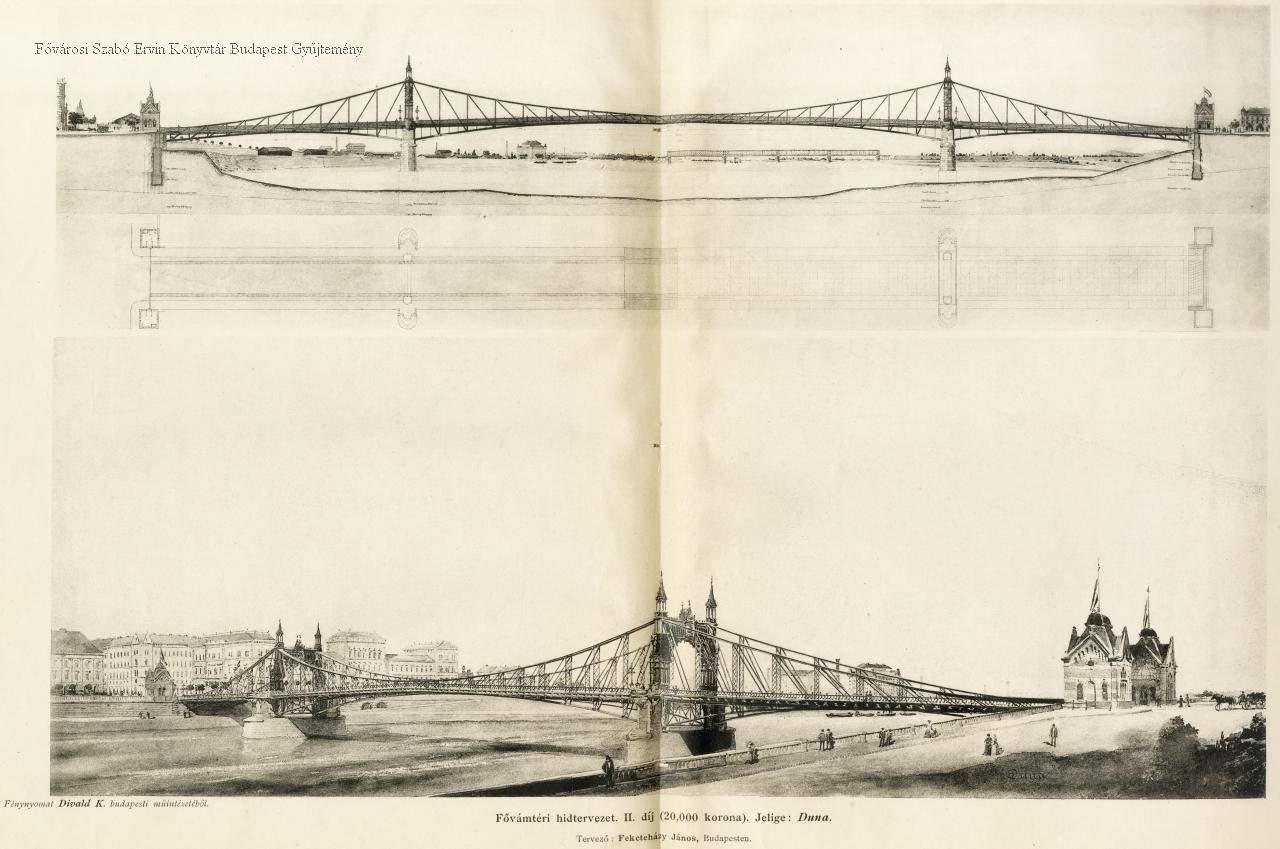 János Feketeházy's plan (Source: FSZEK Budapest Collection)
János Feketeházy's plan (Source: FSZEK Budapest Collection)
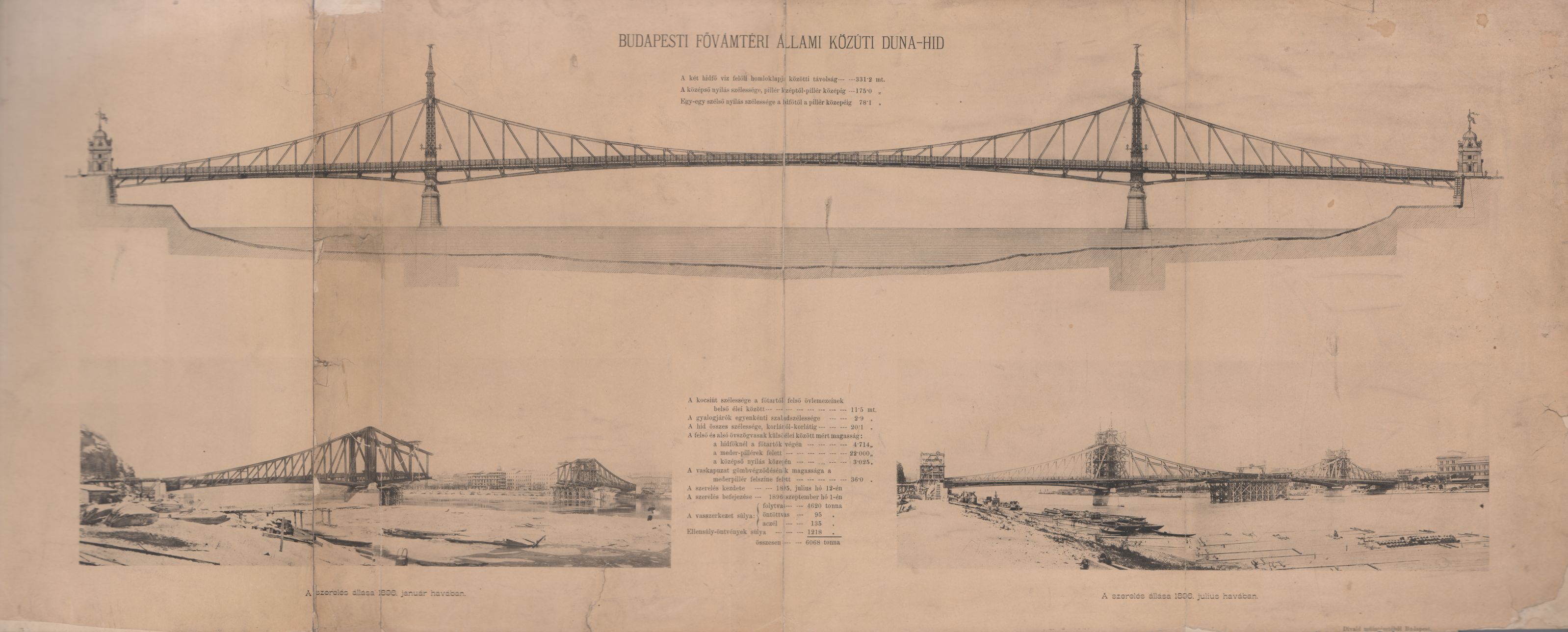 Side view of the completed bridge (Source: Hungarian Museum of Technology and Transport, TFGY 8284.1)
Side view of the completed bridge (Source: Hungarian Museum of Technology and Transport, TFGY 8284.1)
Which bridges were to be built was decided in 1891 by a committee convened by the Minister of Finance, Sándor Wekerle. The experts suggested the construction of the bridges at Eskü Square and at Vámház Square. For the bridge to be built at Vámház Square, the main reason was to transfer freight traffic to Pest from the Transdanubian roads leading to Buda.
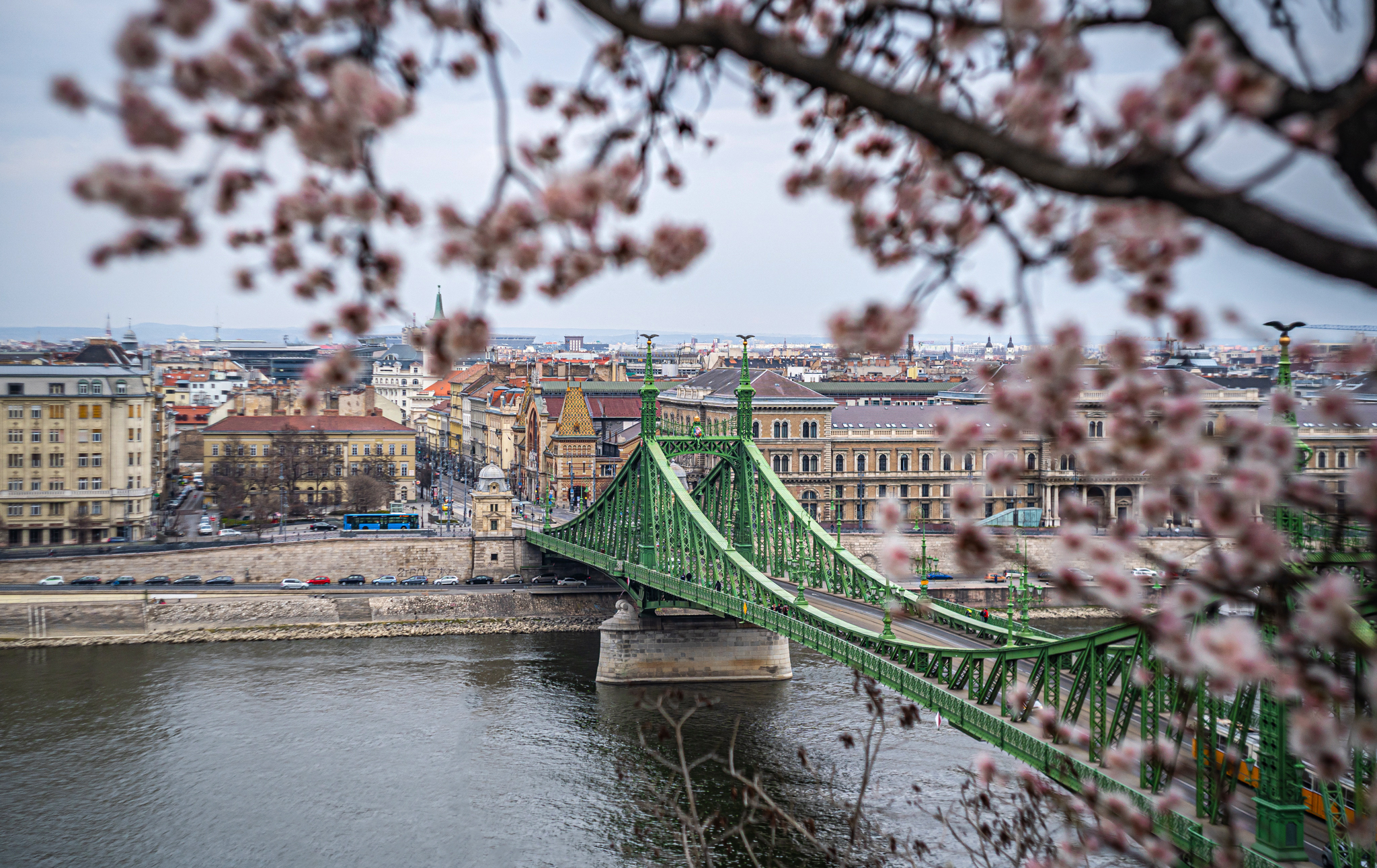 The Liberty Bridge. Today it is narrow, but when it was handed over it was considered wide (Photo: Balázs Both / pestbuda.hu)
The Liberty Bridge. Today it is narrow, but when it was handed over it was considered wide (Photo: Balázs Both / pestbuda.hu)
An international tender was announced for the bridge together with the one at Eskü Square. 21 applications were received for the one at Vámház Square, the winning plan was submitted by János Feketeházy, the retired engineer of MÁV. As there was a joint tender for the two bridges, Feketeházy's plan actually took second place in the whole procedure, the first prize went to an idea that came for the bridge at Eskü Square, but the German engineer's plan was not built in the end, while Feketeházy's Vámház Square bridge was.
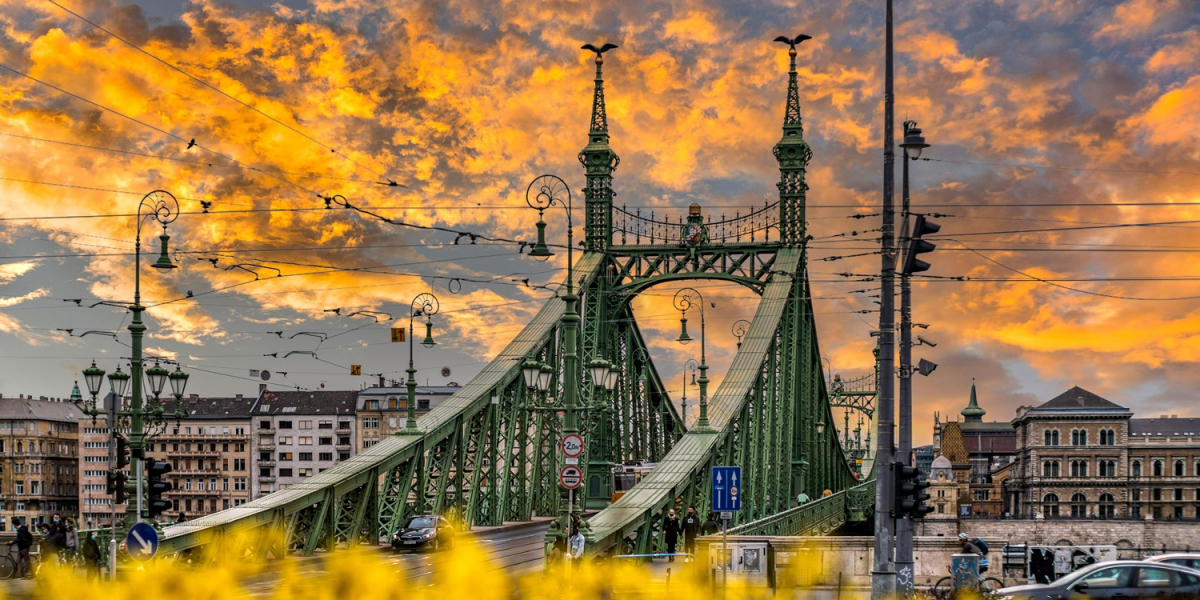
The Liberty Bridge (Photo: Balázs Both / pestbuda.hu)
Feketeházy is thus the only Hungarian engineer whose work won in an international design competition for a Budapest road bridge and also has been realized. (This occurred again in the case of the Deák Ferenc highway bridge.) Several of the three-span Gerber-girder (cantilever) bridge designs, similar to the winning design, were submitted to the tender, and the critics highlighted the elegant lines of the bridge in Feketeházy's design.
The shortest Danube bridge in Budapest - its architectural design was made by Virgil Nagy, a university professor - was the first of its kind in Hungary to be decorated according to the tastes of the age by exploiting and even highlighting the potential of steel and not imitating a more “noble” material, i.e. wood or stone.
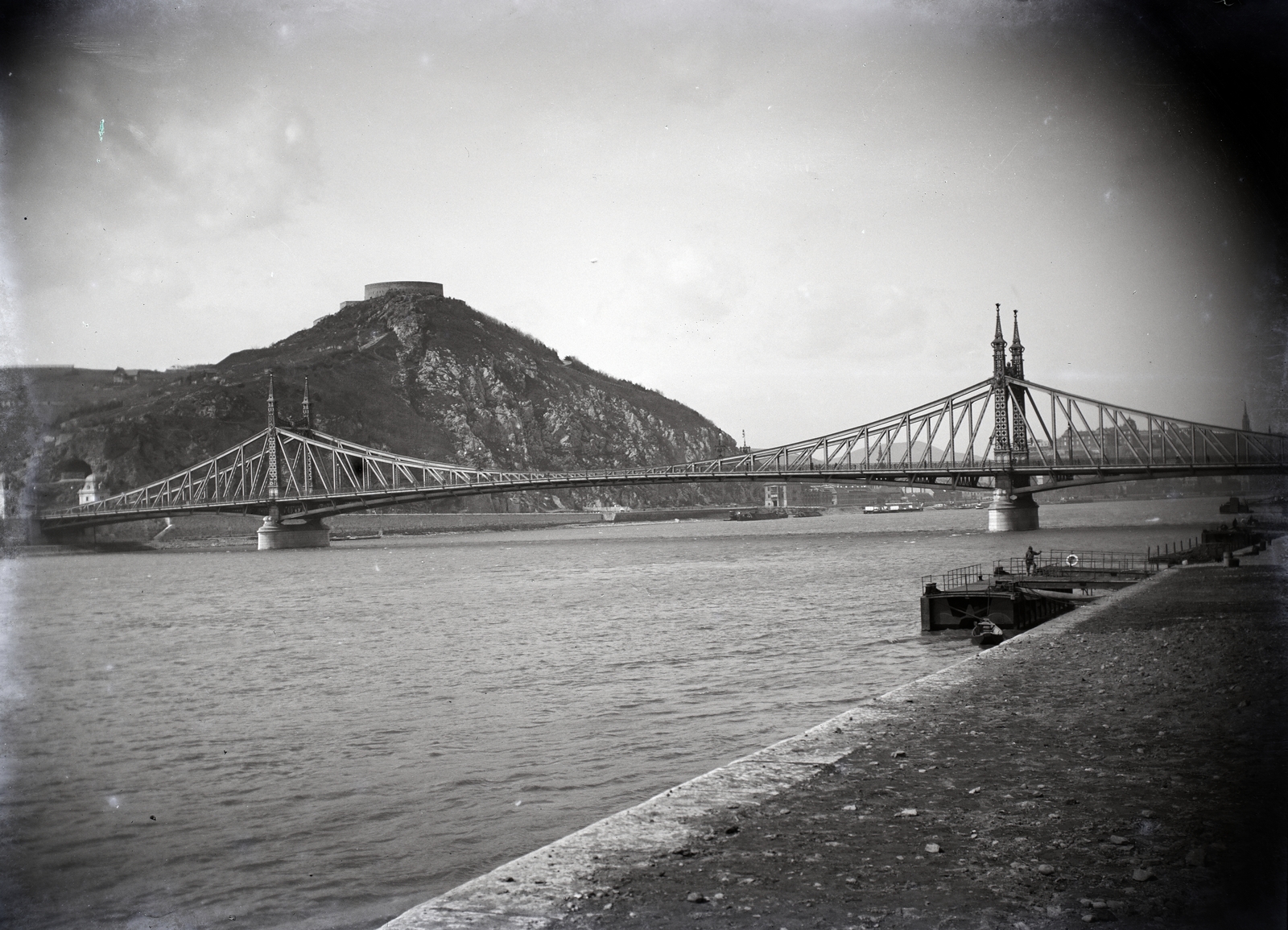 The bridge was handed over shortly after 1897 (Photo: Fortepan / No.: 204235)
The bridge was handed over shortly after 1897 (Photo: Fortepan / No.: 204235)
When it opened, on Sunday afternoon, 4 October 1896, it was pouring with rain. The king and the nobility took their seats under a huge tent. Franz Joseph pressed the button with which he started the riveting device that hammered in the last - silver - rivet in the bridge. The king's monogram, i.e. the letters FJ, were engraved in the silver rivet. The king also graciously allowed the bridge to be named after him.
The notable rivet was stolen several times and then replaced over time. It was also replaced during the last renovation, but now its surroundings have been designed so that the rivet is not visible and cannot be stolen.
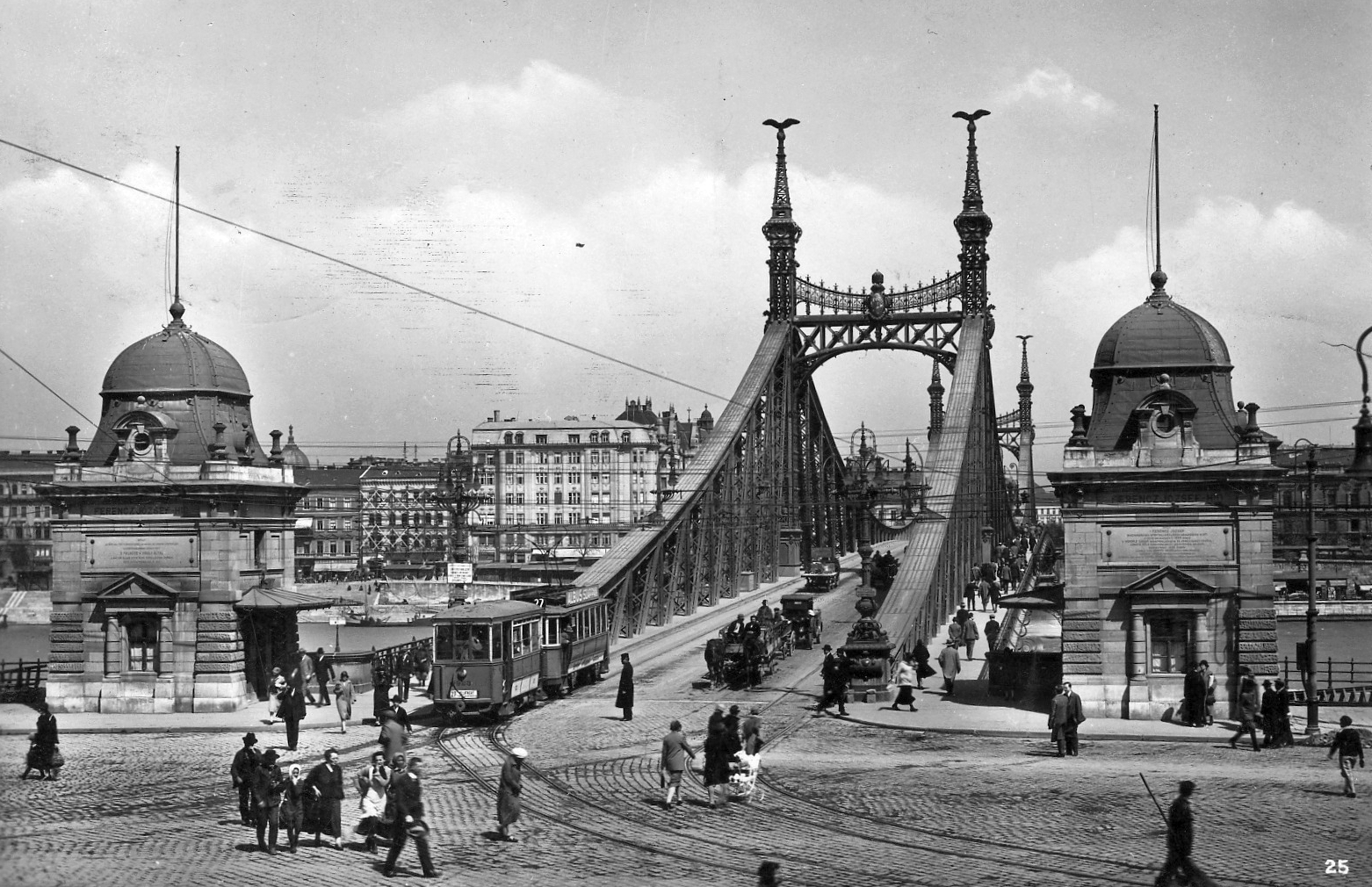 Tram traffic was always brisk on the bridge (Photo: Fortepan / No.: 32578)
Tram traffic was always brisk on the bridge (Photo: Fortepan / No.: 32578)
Two years after its handover, from 1898, an electric tram operated on the bridge, of course with a lower line design back then. Trams have been running on it ever since, although it has been constantly on the agenda since the 1960s and 1970s that this will sooner or later have to be phased out because the structure of the bridge cannot withstand the load. However, the last renovation managed to fix the structure so that trams can still travel on it with confidence.
After its handover, practically a new part of the city was born. Buda south of Gellért Hill was actually undeveloped, only a few buildings were standing there scarcely. However, the bridge made available the almost empty areas south of Gellért Hill, thus creating today's 11th District. In the first decades of the 20th century, the southern side of Gellért Hill, the surroundings of today's Bartók Béla Road and Móricz Zsigmond Circus were built.
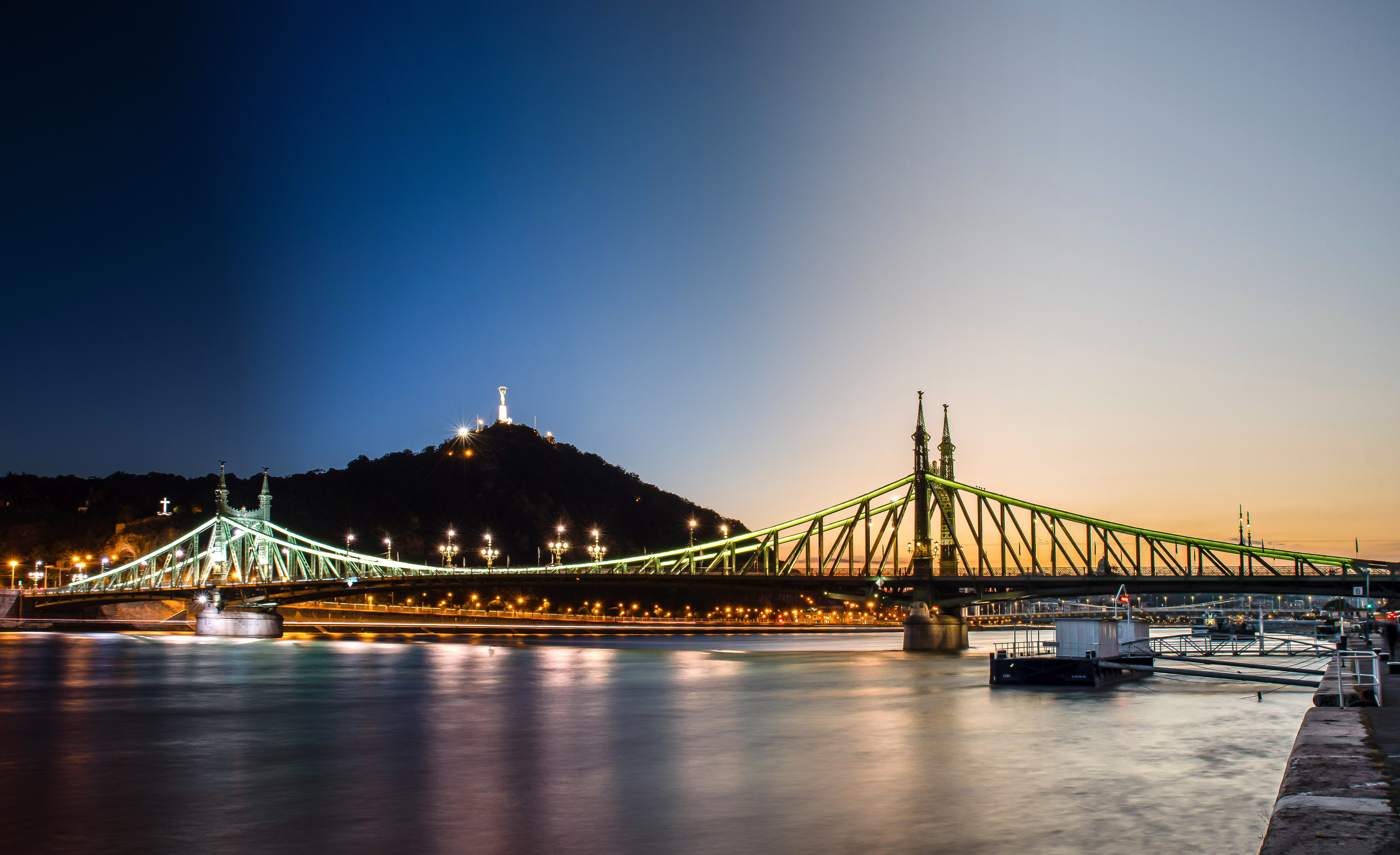 The bridgehead in Buda was almost empty. Today, Gellért Square is a bustling point of the city (Photo: Balázs Both / pestbuda.hu)
The bridgehead in Buda was almost empty. Today, Gellért Square is a bustling point of the city (Photo: Balázs Both / pestbuda.hu)
The former Franz Joseph bridge hides many other interesting things. Although it was built as the third permanent Danube bridge in Budapest, today it still has the oldest structure among the Danube crossings in the capital.
The plans for the current structure of the Chain Bridge were made in the 1910s, on the basis of which the iron structure of the bridge was replaced between 1913 and 1915. The Margaret Bridge was also rebuilt with a modified structure after World War II, while the structure and much of the material of the Liberty Bridge is essentially the same as it was when it was handed over in 1896. Of course, it has been refurbished several times and many of its components have been replaced, but it has not fundamentally changed.
The four huge bolts in the middle of the bridge hold the huge middle part suspended in the middle. The bridge is cantilevered, also known as a Gerber-girder bridge. From the pillars towards both the shore and the middle of the bridge, the bridge structure extends like an arm, the branch extending towards the shore is the bridgehead, but here the bridge is not fixed, it just “sits” on the bridgeheads.
 The middle part of the bridge is held by huge bolts (Photo: Balázs Both / pestbuda.hu)
The middle part of the bridge is held by huge bolts (Photo: Balázs Both / pestbuda.hu)
The “arms” protruding towards the centre of the bridge do not touch, between them the middle part of nearly 50 meters is suspended with the four huge screws mentioned above. The bridge does not tip into the river here because there are 609-609 ton counterweights at the bridge heads. That is, the whole bridge is like two seesaws placed next to each other.
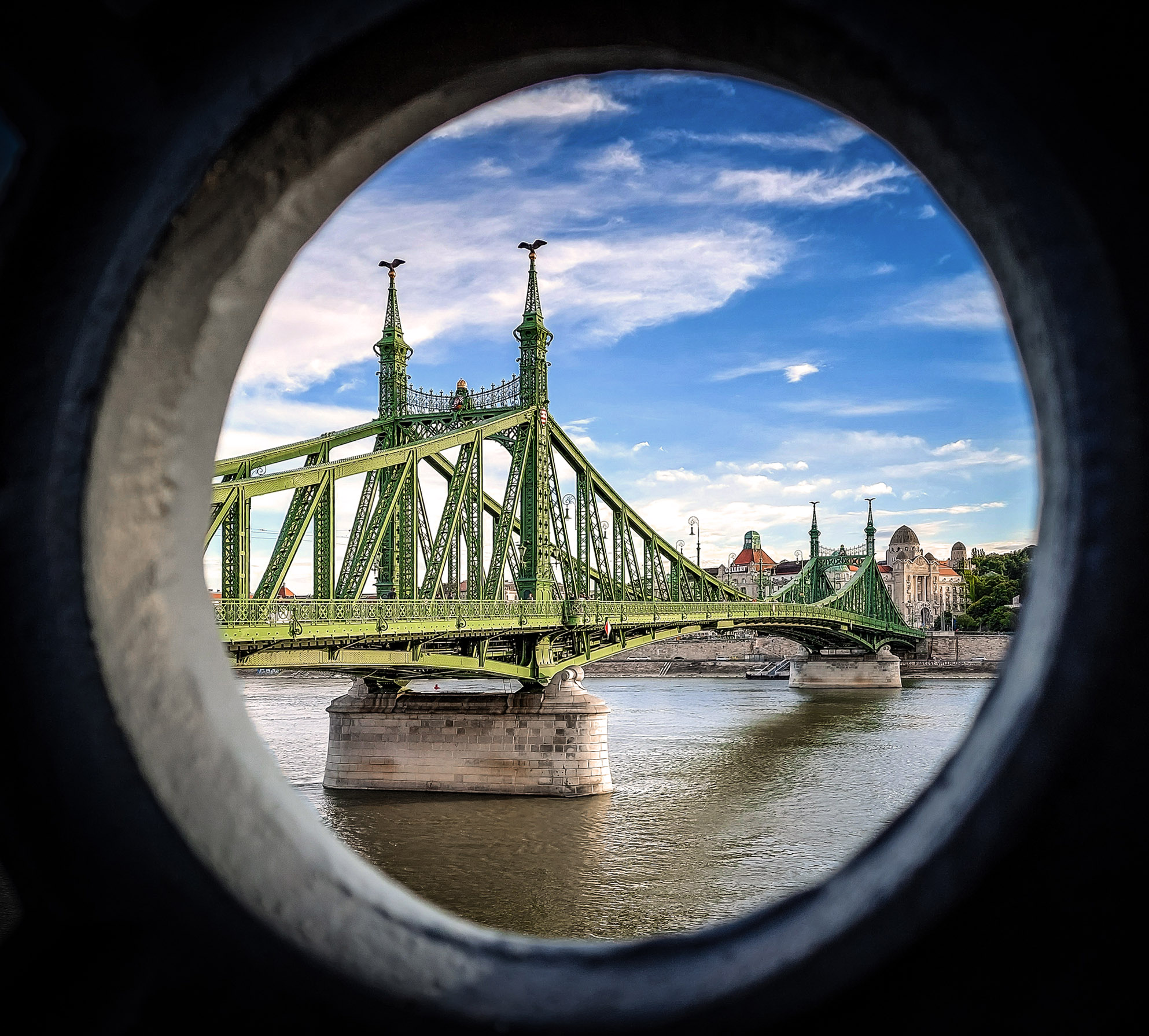 The nearly 50-meter middle part of the bridge was suspended separately (Photo: Balázs Both / pestbuda.hu)
The nearly 50-meter middle part of the bridge was suspended separately (Photo: Balázs Both / pestbuda.hu)
After World War II, it was the Danube bridge fastest to be rebuilt in Budapest, because although it was very significantly damaged, it was not completely destroyed. During the renovation, suggestions were made that all its ornaments should be deprived, in accordance with the spirit of the age, and make it a bare beam bridge. However, this was discarded, parts of the bridge however, due to material savings and haste, were rebuilt more simply, such as the railing in the middle.
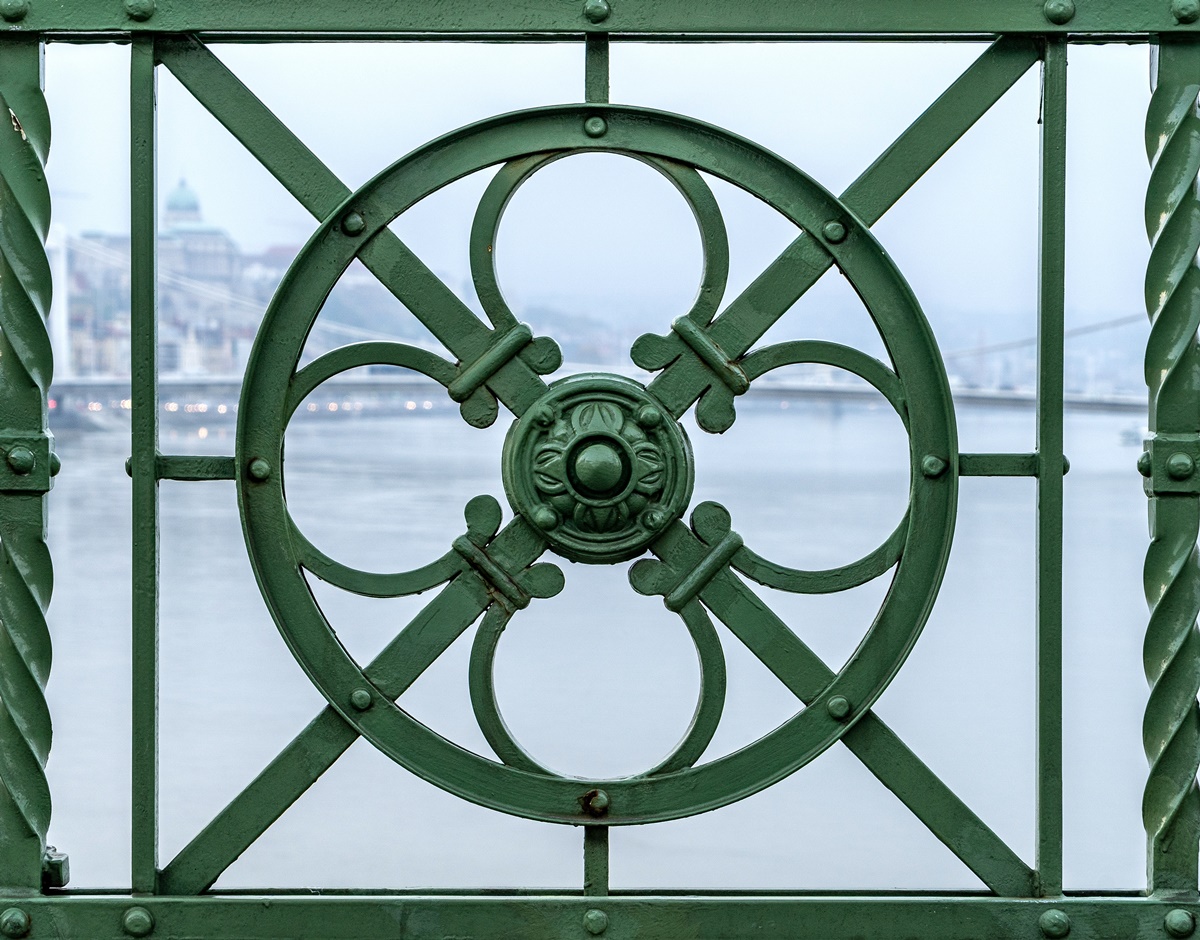 Between 1946 and 2008, the railings of the middle opening were much simpler than what is now visible (Photo: Balázs Both / pestbuda.hu)
Between 1946 and 2008, the railings of the middle opening were much simpler than what is now visible (Photo: Balázs Both / pestbuda.hu)
Even so, they were deprived of some of their ornaments, which, although they survived the war, were not acceptable to the communist power, thus removing the former coats of arms and the Holy Crown from the top of the gates. After the restoration, the former Franz Joseph bridge was handed over on 20 August 1946 as Liberty Bridge.
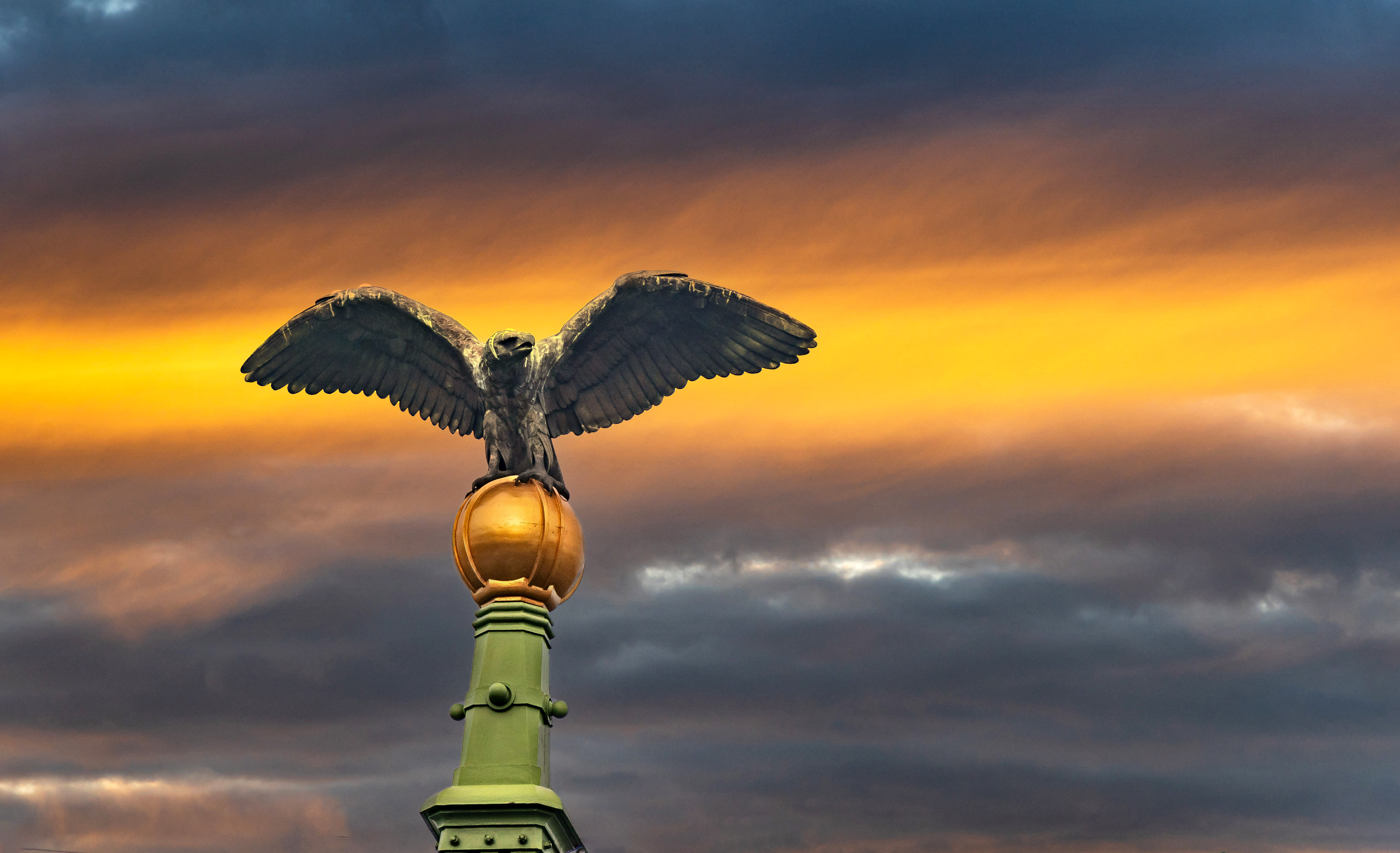 Fortunately, many of the Turuls and ornaments remained even after World War II (Photo: Balázs Both / pestbuda.hu)
Fortunately, many of the Turuls and ornaments remained even after World War II (Photo: Balázs Both / pestbuda.hu)
The Liberty Bridge was intended to be demolished in the 1960s to build a wider crossing in its place, for which a multi-level junction similar to Döbrentei Square was planned for Gellért Square. The new bridge would have been Y-shaped, with the Buda side branching in the middle of the Danube. At that time, the idea was to cross the city center of Budapest with city highways. The Liberty Bridge was not considered very valuable, it was believed that a much wider new bridge would be better here.
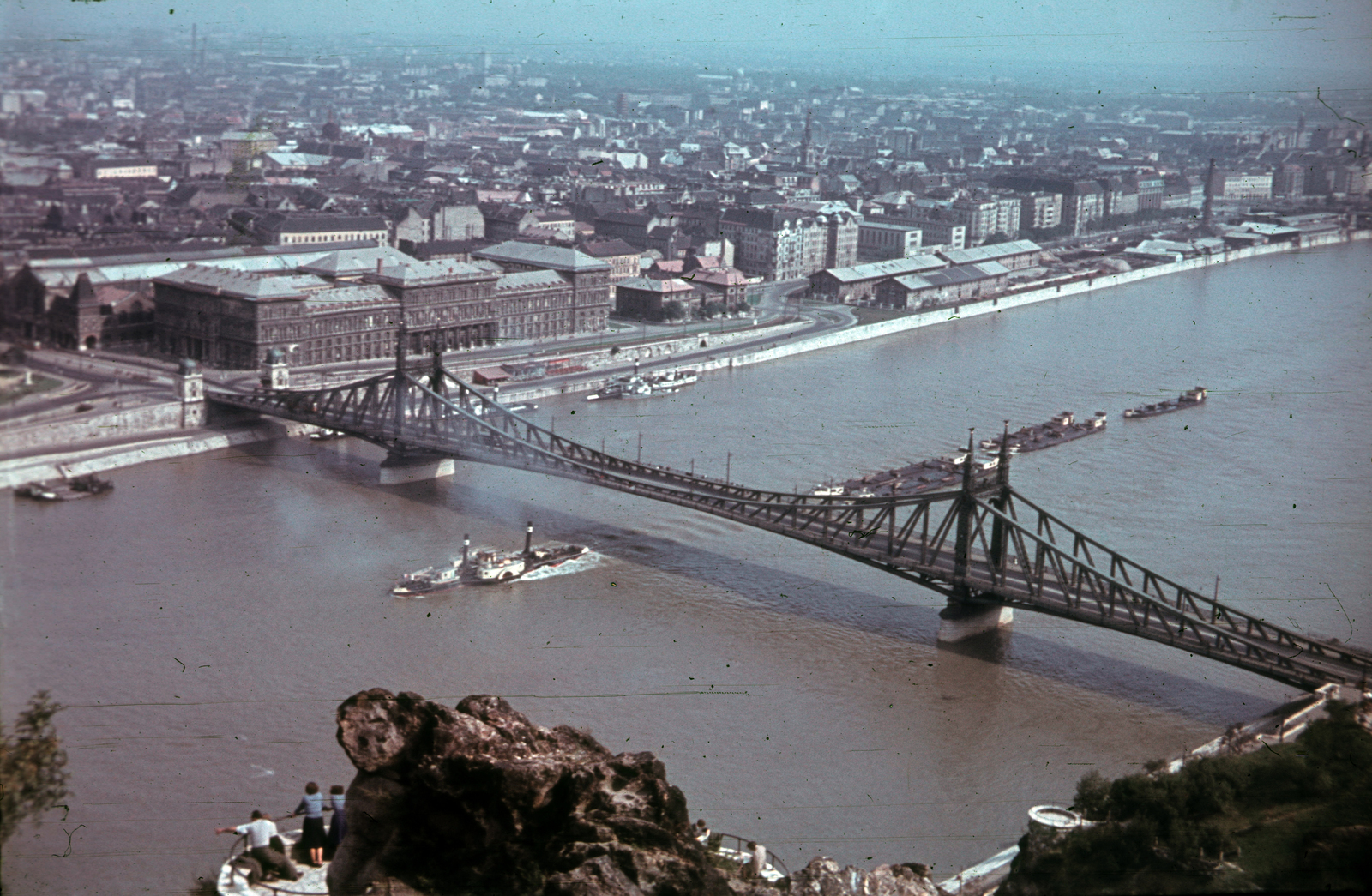 In grey, in 1955 (Photo: Fortepan / No.: 129231)
In grey, in 1955 (Photo: Fortepan / No.: 129231)
The Liberty Bridge was green, greenish grey before the war. Because bridges have been repainted many times, the hue of their colour has also changed frequently, there is also evidence that it was repainted in blue in the 1930s. After the war, it was clearly grey until the 1980s. It was renovated in two stages between 1980 and 1986 and was then painted green. For a while, only the bottom was green, above it it remained grey. For its current green colour, the colour pattern was found at a location on the structure that had not been opened since its construction, i.e., 1896.
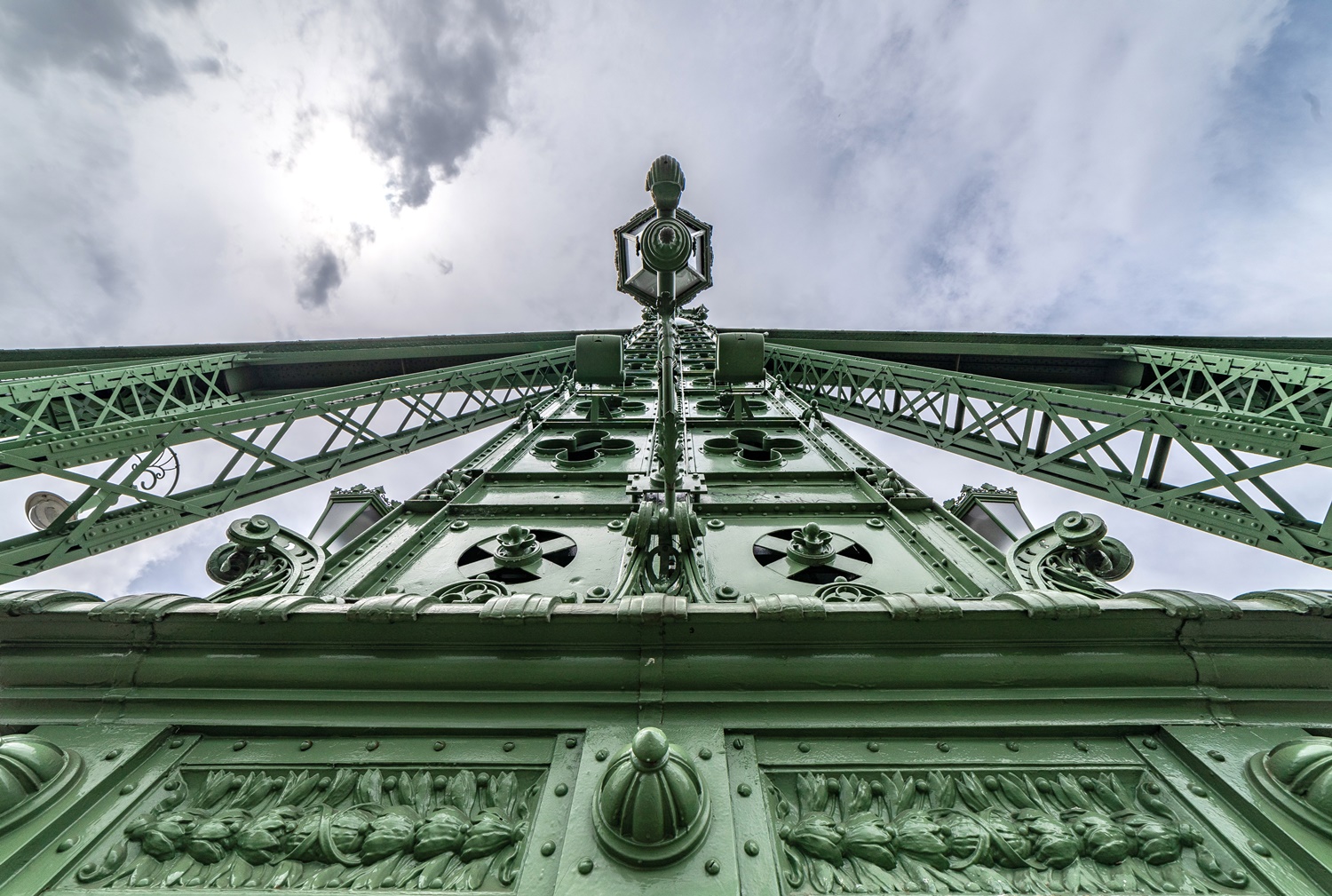 Miracle in the green (Photo: Balázs Both / pestbuda.hu)
Miracle in the green (Photo: Balázs Both / pestbuda.hu)
To the bridge that can be seen today all former ornaments dismantled and abandoned during the post-World War II restoration were returned. The coats of arms and the Holy Crown - albeit painted green and not gold - were put back as early as 1986. The preliminary plans for the renovation did not include the reinstatement of the coats of arms, which could be replaced by bypassing city and state leaders, taking advantage of a legal loophole.
The monument regulations stated that where there was once a coat of arms on a monument, a coat of arms must be placed there. However, the legislation did not specify which coat of arms, the one in force at the time or the historical one. And the leaders of the renovation decided to put back those that decorated the bridge in 1896. During the last renovation, between 2007 and 2009, the other ornaments, such as the candelabra, were restored to their old form, and the railing of the middle part was also restored according to the original plans.
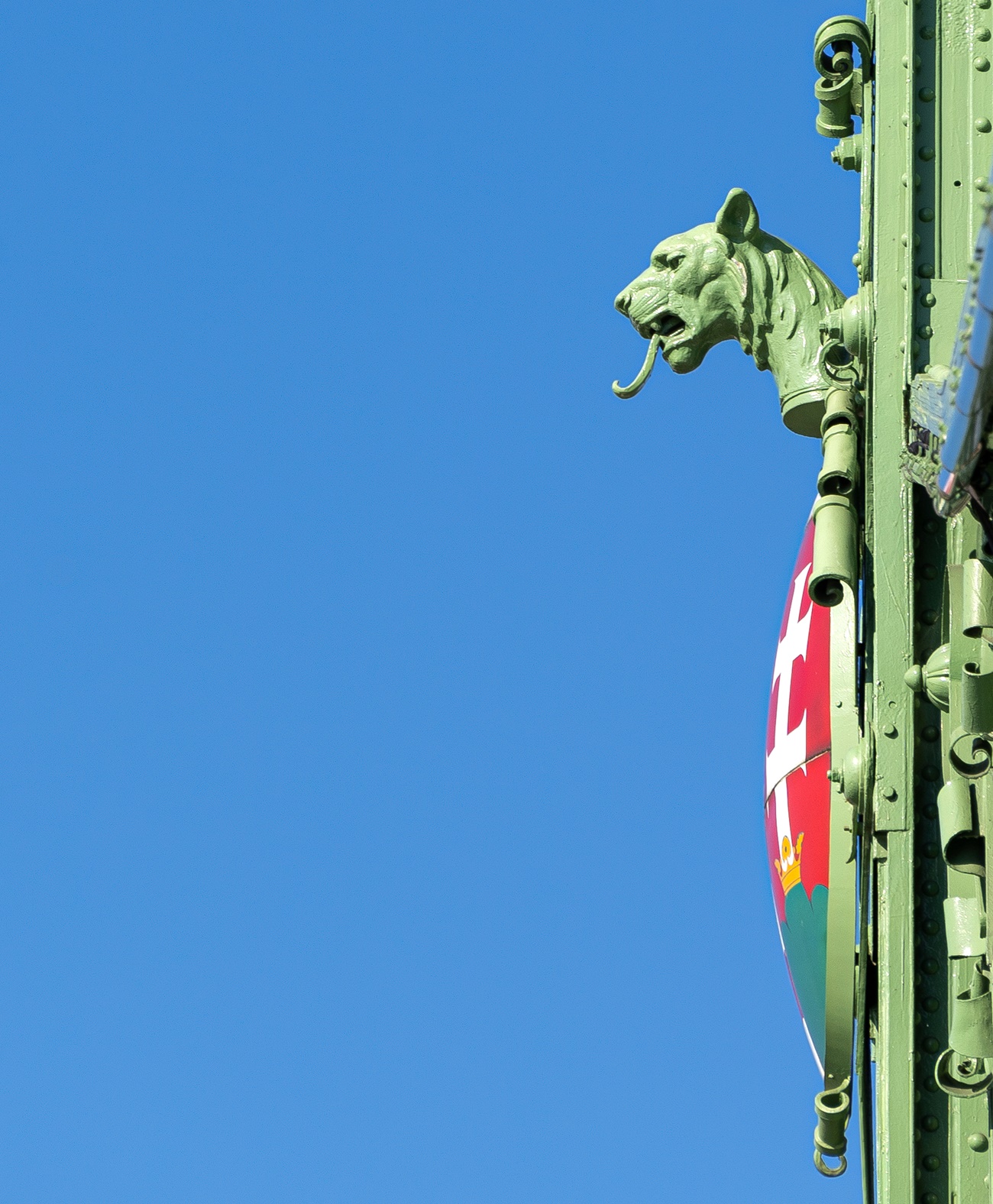
The coats of arms were returned in 1986 (Photo: Balázs Both / pestbuda.hu)
Liberty Bridge is 125 years old. During the last renovation, all its weak elements have been replaced, rejuvenated, repainted, so we can certainly hope that this fantastic steel lace bridge can not only be admired but used in the coming decades. .jpg)
Although it is now called the Liberty Bridge, the original namesake, Franz Joseph, is also there on the bridge (Photo: Balázs Both / pestbuda.hu)
Cover photo: The Liberty Bridge is one of the ornaments of Budapest (Photo: Balázs Both / pestbuda.hu)

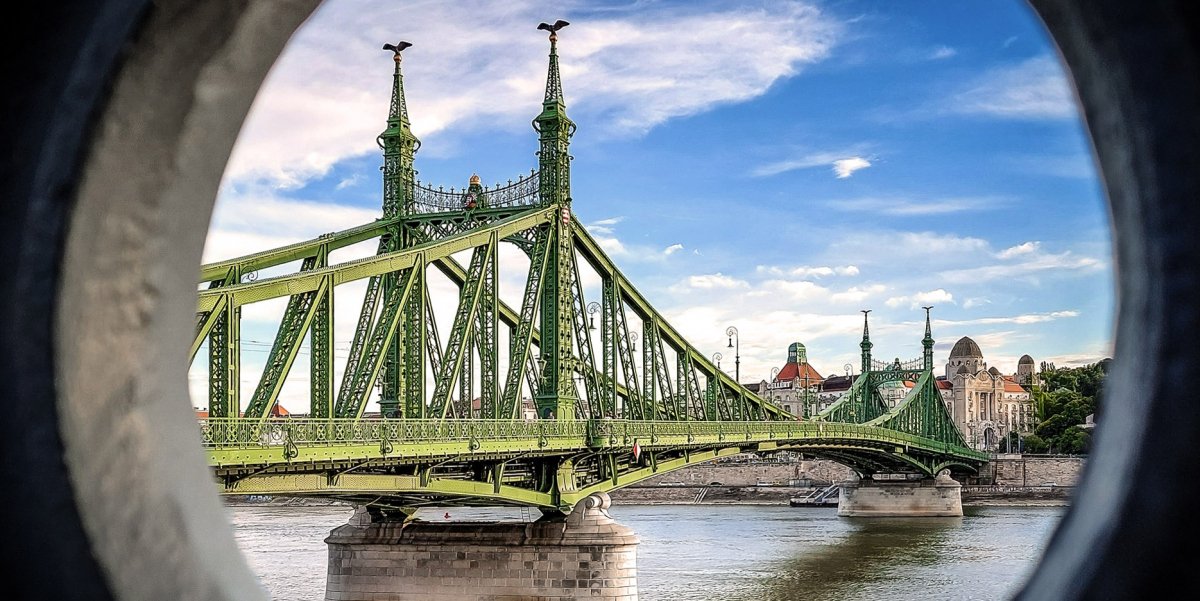


































Hozzászólások
Log in or register to comment!
Login Registration